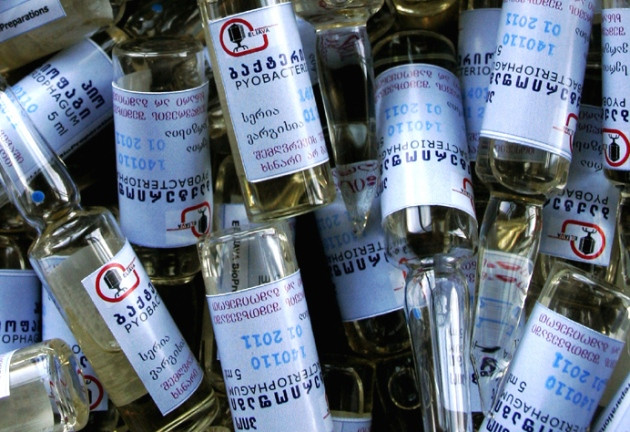Does phage therapy return to replace antibiotics?
Phage is not a new discovery but when antibiotics were born, this therapy was left open and forgotten. But in the context of antibiotic resistance that is killing thousands of people today, can this therapy come back to prevent human illness ?!
Phage in history
At the beginning of 1890, Ernest Hankin (1865-1939) - an English bacteriologist, studying in India, there was a cholera outbreak along the banks of the Ganges River. There have been many deaths due to disease and local people drop their bodies on the river according to their own custom. The Ganges water is becoming more and more polluted and may make the cholera worse by observing Hankin across Europe, the supply of contaminated water makes cholera faster. But here, on the banks of the Ganges, cholera is still relatively calm, people who die but do not spread to others as quickly as wildfires like before. Hankin concluded that there is something mysterious in the water that kills pathogens before they have a chance to destroy the human body. However, it took more than 20 years for a French scientist to find the guardian angel of the people on the banks of the Ganges River, a virus that could cause illness but also kill the bacteria that need to be removed. abandoned and they appeared to purify water, remove cholera bacteria before it could infect local people.

A type of phage is used to treat illness.
Over 100 years later, at the World Change Ideas Summit in Sydney, Australia, Heather Hendrickson, Massey University in Auckland, New Zealand described the case of Alfred Gertler - a one-eared jazz musician Mountaineering causes an ankle rupture and a serious infection. Antibiotics used for treatment are ineffective because the blood vessels in the body are almost impossible to deliver with the broken ankle. The risk of forced leg sawing is very high. However, Alfred found himself a savior - the phage therapy of the Eliava Microbiology Research Institute in Tbilisi, the Georgian capital, the republic of the former Soviet Union. At this research institute, his infection was completely cured by doctors after only 3 days with phage therapy. Besides, phage also brings high efficiency in treating infections caused by wounds and burns as well as preventing gastrointestinal diseases.
And prospects for antibiotic replacement?
Phage is not a new discovery. In the 1920s and 1930s many American doctors applied it to treat infected patients. However, the emergence of many antibiotics has led to the abolition of treatment with infectious phage products in the US and many Western European countries. However, after decades, bacteria began to develop new defenses against antibiotics, causing alarming consequences such as death for hundreds of thousands of people every year and this number could increased to 10 million by 2050 (according to a 2014 report by the British Government and the Wellcome Trust biomedical charity organizations). And does phage therapy return to replace antibiotics? Hendrickson said that phage may be a promising method for the attack against antibiotic resistance.
First , phages are very diverse, combined with their own characteristics that can provide great potential for new treatments. In addition, their numbers are plentiful, in each gram there are more bacteria than the people on the planet today and in every human body has used their natural defenses, such as our nose Full phage can kill bacteria in the air we breathe.
Secondly, on the advantages of phage, they have the ability to target the target to be destroyed without affecting the neighboring agency. If antibiotics are like a nuclear bomb exploding in the body and destroying pathogenic bacteria, but also destroying beneficial bacteria, they can be sterilized like snipers, knowing how to pick the enemy while Leave allies unharmed.
Phages have been studied in Eastern Europe and now, Hendricson and his students are looking for natural phages in the soil as well as safe storage when building libraries of physical bodies. bacteria.
- Detecting bactericidal proteins that can replace antibiotics
- The story of hope, before we enter the era of
- Find a new drug that can replace antibiotics
- Hundreds of thousands of phage species: Available in the world's oceans.
- What are antibiotics and classify antibiotics
- 'Heavenly' facts about antibiotics
- Alternatives to ancient antibiotics
- Find new antibiotics under the ocean
- Why do you know that antibiotics do not treat flu, many people continue to abuse?
- New therapies prolong the lives of AIDS patients
- Antibiotics from dirt
- Honey can replace antibiotics
 The United Nations' all-human warning: All antibiotics are becoming useless
The United Nations' all-human warning: All antibiotics are becoming useless How did bacteria learn to fight antibiotics?
How did bacteria learn to fight antibiotics? 10 million deaths are one of the startling numbers about 'Antibiotic resistance'.
10 million deaths are one of the startling numbers about 'Antibiotic resistance'. 7 principles when using antibiotics
7 principles when using antibiotics